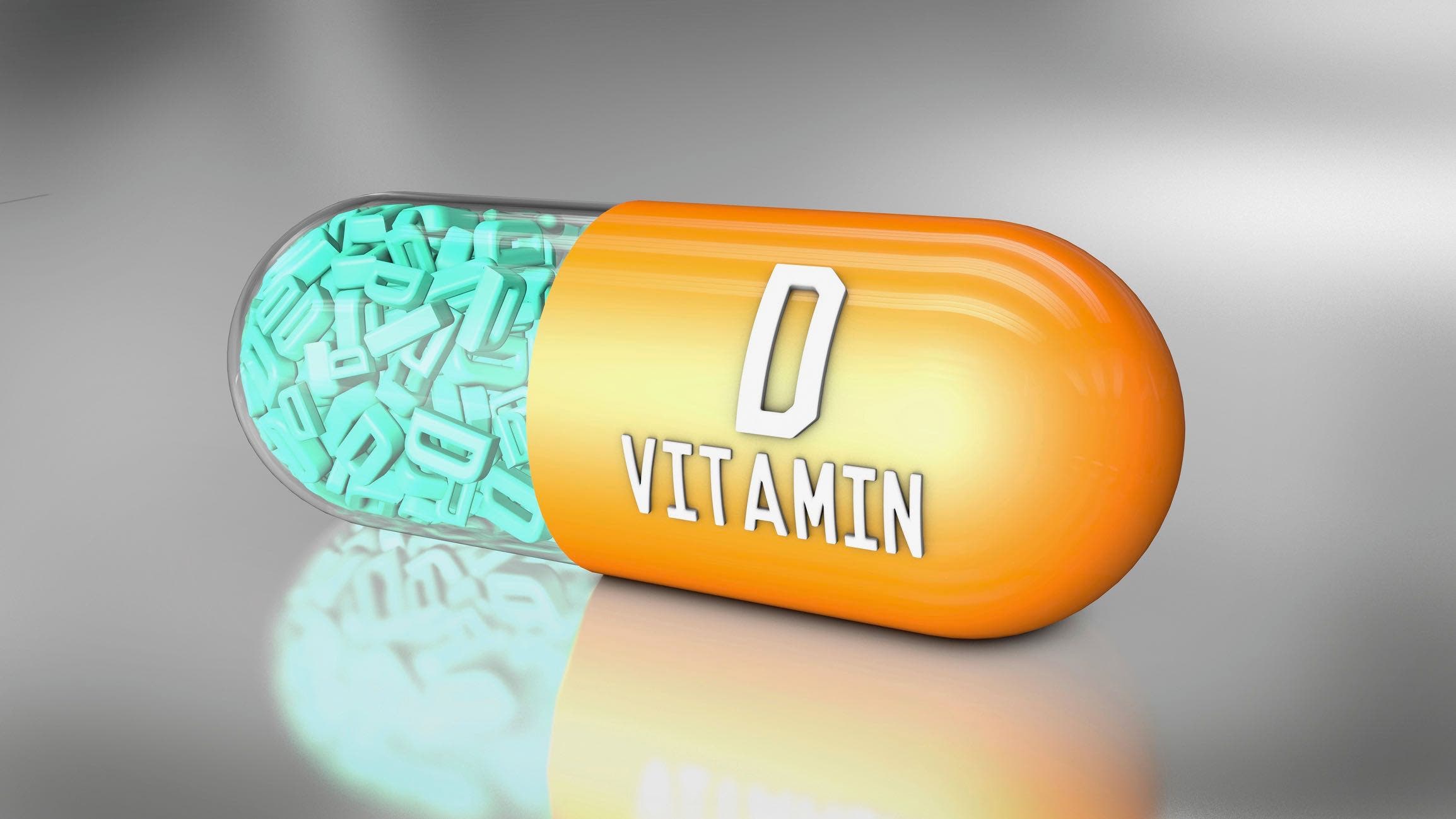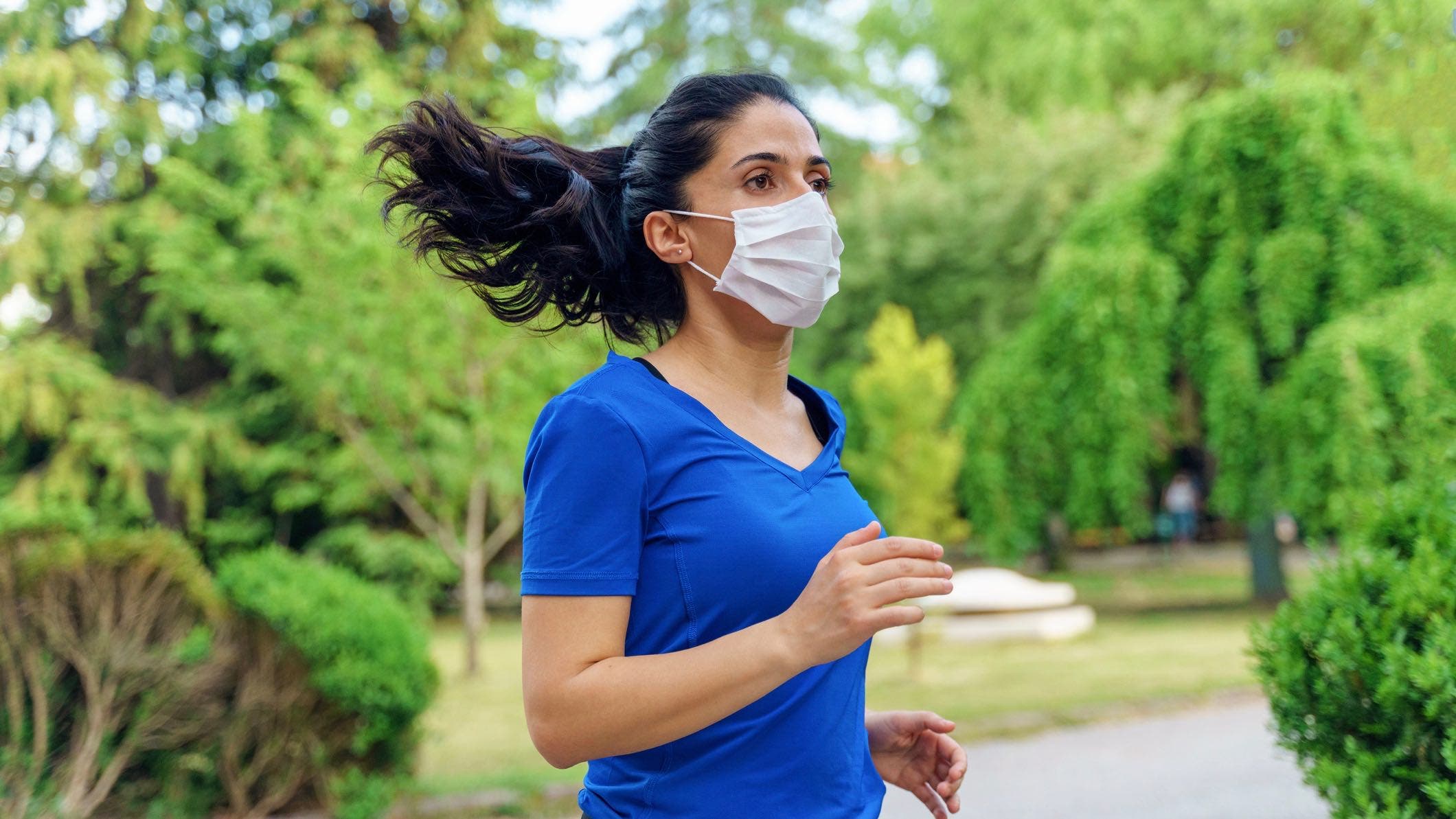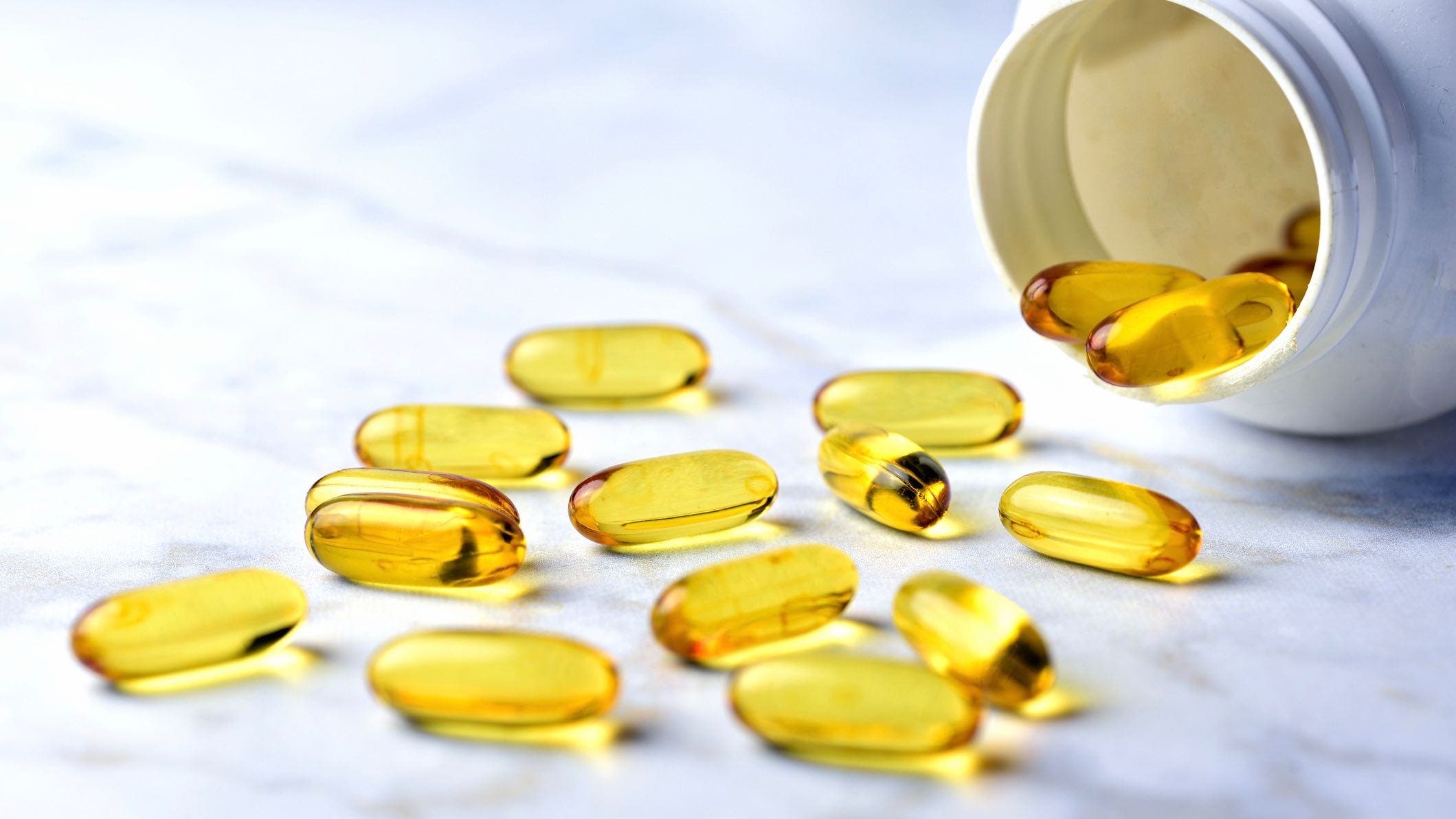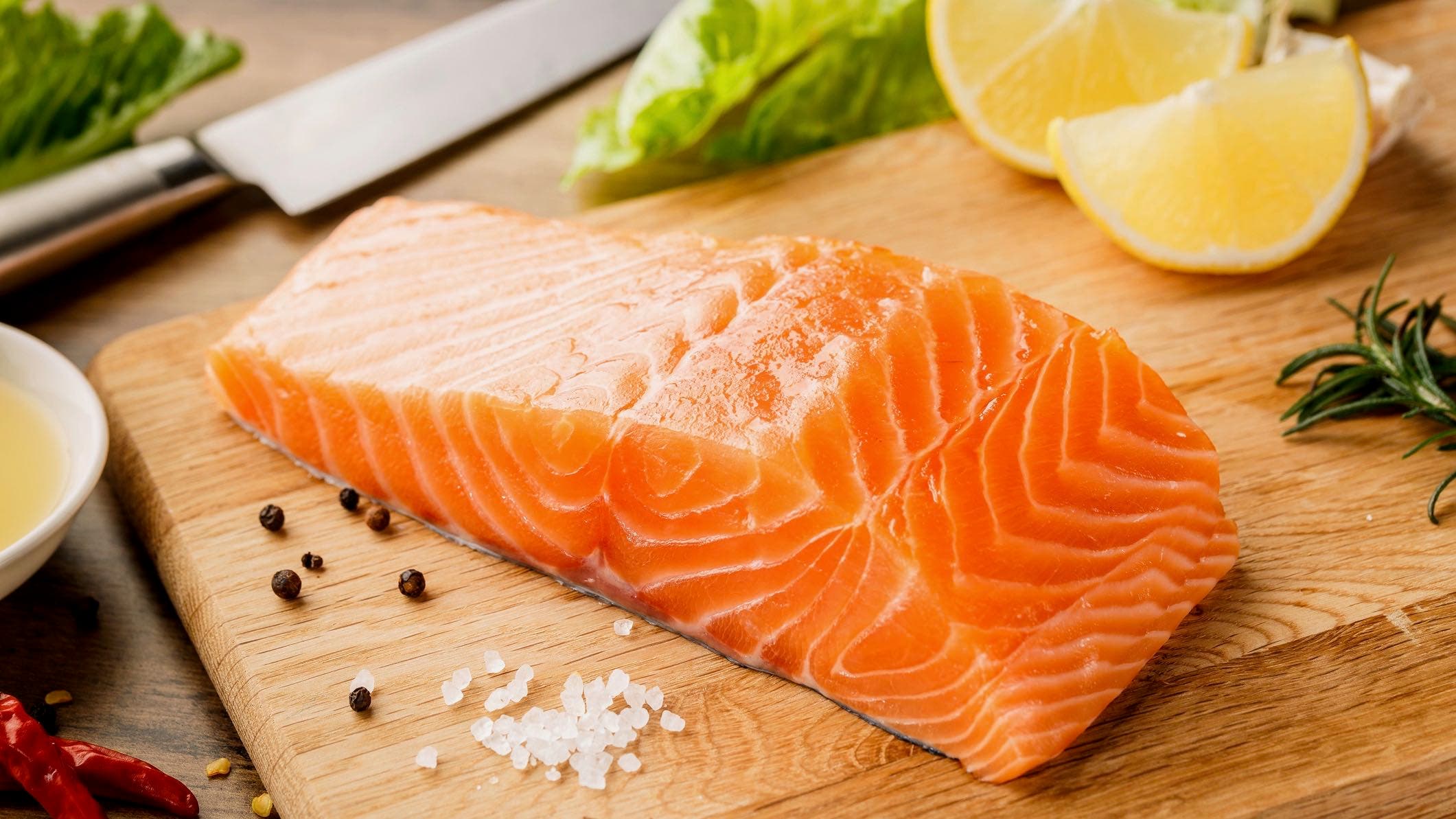Everything Endurance Athletes Need to Know About Vitamin D

Unless you’ve been training in a cave, you’ve probably been hearing a lot about vitamin D during these pandemic days. It’s getting a lot of press as a way to bolster our defenses against the virus in a time when everyone is looking to just stay healthy. And athletes are increasingly being told that getting enough vitamin D is a key factor in performing at a top level. All of this had led to pill bottles flying off store shelves as if vitamin D was the toilet paper of the supplement world.
Vitamin D is a fat-soluble vitamin whose most recognized role is to promote calcium absorption in the body. Since calcium is one of the major building blocks of bone, a vitamin D deficiency can lower calcium availability and lead to delayed skeletal development and rickets in children and osteoporosis with increased risk of bone fracture in adults. But your body calls upon vitamin D for so much more than maintaining break-resistant bones; it’s needed for your muscles, cells, nerves, and immune system to function properly. Researchers are also studying possible associations between vitamin D and cognitive functioning, heart disease, diabetes, depression, and certain cancers.
Why the overarching health benefits? In many ways, vitamin D behaves more like a hormone than a vitamin in that it modulates hundreds of genes and plays a role in numerous bodily processes ranging from cellular growth to protein synthesis. Cells in every tissue including muscle and heart have receptors for vitamin D and require adequate amounts to function properly. So, when it comes to nutrition, think of vitamin D as a multitasker.

Can Vitamin D Boost Your Game?
The case for vitamin D as a sports performance booster has gotten a lift in recent years from a batch of research papers suggesting that champions are built on getting enough of the sunshine vitamin.
For instance, a recent study in the journal Nutrients found that active males who took a high amount of vitamin D (6,000 IU) for eight weeks experienced improvements in aerobic (VO2 max) and anaerobic (sprint performance) fitness. A separate placebo-controlled investigation found that runners who took 2,000 IU of vitamin D daily for two weeks benefited from a reduction in signs of muscle damage in response to downhill running compared to athletes who did not receive the vitamin D. A report in the European Journal of Preventive Cardiology showed that men and women who tested for the highest vitamin D levels had better cardiorespiratory fitness (VO2 max) than those with the lowest levels—each 10 nmol/L increase in blood vitamin D level was associated with a significant increase in VO2 max. One meta-analysis found evidence that taking in more vitamin D can improve muscle strength. Finally, because of vitamin D’s role in regulating bone structure, it’s certainly an important nutrient for athletes to fend off bone fractures associated with the high-impact nature of running.
With all of these benefits, you might be thinking that it’s time to mega-dose. But popping pills like candy won’t turn you into an Olympic medalist. For the most part, performance benefits, which in many studies are slight, occur only when poor vitamin D status is ameliorated after which point we don’t have any good evidence that taking in more vitamin D than what is needed to correct for low levels or a full-blown deficiency will bolster workouts and race results. In other words, there are likely diminishing returns with supplementation and little performance benefit from topping up your stores beyond the level considered adequate for general health. (On a side note, studies typically do not show lots of extra vitamin D to be beneficial as protection against brittle bones if adequate vitamin status is achieved. Excessive amounts may actually be detrimental to bone health.)
And the impact of vitamin D on performance is hardly a slam-dunk. In a large meta-analysis of previously published randomized trials, researchers reported in the journal Sports Medicine that there is little conclusive evidence that people who take enough vitamin D (an average of 3,000 IU daily) to improve status experience notable improvements in athletic performance. Being low in vitamin D could be a sign that some athletes have lower levels of sun exposure, and it’s this diminished time under the yellow orb that could be what’s negatively impacting certain performance measures. (Sunlight may boost nitric oxide levels that allow muscles to work more efficiently during exercise.) Clearly, this is a nuanced subject and one that requires more quality research.

Can Vitamin D Help Battle COVID-19?
As we all try to stay abreast of ways to fend off COVID-19, you might have heard about the emerging research on COVID-19 survival rates and vitamin D status. In addition to bone and skeletal health, vitamin D helps to regulate inflammation in the immune system, thereby having the potential to influence COVID infection and outcomes.
A study in The Journal of Clinical Endocrinology & Metabolism found clinical vitamin D deficiencies in 82% of patients who were hospitalized with COVID-19, compared with 47% in a population-based control group. Recent data published in the journal PLOS One found that patients aged 40 and older whose levels of vitamin D were sufficient were 51.5% less likely to die of COVID-19. While researchers from the University of Chicago found an association between vitamin D deficiency and the likelihood of becoming infected with the coronavirus. Vitamin D deficiency was linked with a nearly fivefold higher likelihood of being positive for COVID-19, according to a new study in the journal Nutrition.
You must know that in no way is vitamin D a COVID-19 panacea. No direct cause-and-effect has been shown, meaning that people with better vitamin D status may simply have healthier lifestyles that help protect them against the worst of the virus (i.e., more time spent outdoors, less body fat, a more nutrient-dense diet). More studies on larger populations need to be done before any firm conclusions can be drawn. Still, getting enough vitamin D may be a prudent recommendation during these pandemic times.

How Much Vitamin D Should You Get?
The current recommended daily allowance of vitamin D from the National Academies of Sciences is 600 IU for adults up to the age of 70. The RDA represents a level of intake believed to meet the nutritional requirement of 97.5% of the population, including those living at higher latitudes that obtain little or no vitamin D from the sun for a good chunk of the year. However, many experts question whether this amount is adequate to achieve levels in the body high enough to derive the full biological activity of vitamin D. This study suggests that 436 IU of vitamin D is necessary for half of the population to achieve adequate vitamin D levels (50 nmol/L) and that 1044 IU is required for 97.5% of people to be above the threshold. The Endocrine Society recommends 1,500-2,000 IU/day for adults who are not getting adequate unprotected sun exposure.
Compounding vitamin D confusion is that nailing down what’s “sufficient” for vitamin D status depends on who you are listening to. Based on blood tests of a vitamin D metabolite called 25-hydroxyvitamin D (25[OH]D), the National Academies of Sciences considers 50 nmol/L (20 ng/mL) to be a level you want for both bone and overall health. (They say that if you get 600 IU of vitamin D daily you should achieve this level.) The Endocrine Society suggests aiming for at least 75 nmol/L and has classified the non-deficient range of 50 to 75 nmol/L as “insufficient.” The Vitamin D Society calls for a more aggressive 100 to 150 nmol/L. (Of note: the Institute of Medicine’s threshold of potential toxicity for vitamin D is 150 nmol/L and there is little evidence that people with levels greater than 100 nmol/L are healthier overall than those with levels in the 50 to 75 nmol/L range.) There is also some controversy about what impact circulating vitamin D that is bound to a protein has on human health versus “free” unbound circulating vitamin D and how genetic differences such as ethnicity impacts this. Yes, it’s all quite complicated.
Who Is at Risk of Deficiency?
One investigation suggests that the overall prevalence rate of poor vitamin D status (levels below 50 nmol/L ) is roughly 41.6%, with the highest rate seen in Blacks (82.1%), followed by Hispanics (69.2%). Higher levels of the skin pigment melanin likely make blacks and Hispanics more susceptible to poor vitamin D status. Vitamin D deficiency was significantly more common among those who had no college education, were obese, with a poor health status, or not consuming milk daily.
A study in the journal Nutrients found that college athletes who participate in indoor sports can be at a higher risk of having insufficient amounts of vitamin D. So if your winter workouts have moved indoors this may apply to you. In general, vitamin D is often a nutrient of concern for athletes living in the northern half of the United States and all of Canada who are likely not eating enough vitamin D dietary sources and also live where the angle of the winter sun means there is insufficient sunlight (UVB) exposure even if running or riding outdoors.

How to Improve Your Vitamin D Status
All of this is to say, yes, it’s important to keep on top of your vitamin D. Here’s how to make sure you boost your D-fence.
Take the Test
If you are concerned about your vitamin D level, you can request a blood test for hydroxy vitamin D (the most dependable indicator of status) from your doctor. If it is hovering below 50 nmol/L, you may benefit from increasing your intake of foods and drinks containing vitamin D and/or considering supplementation. It can be a good idea to get tested both during the summer and winter months to determine if any differences occur with the season. This can help athletes better understand when they need to include more vitamin D in their diet, add a supplement, or aim for a bit more sun exposure.
Go Fish
The consumption of vitamin D–rich foods can be enough to give you what you need, but few people are getting what they require from diet alone. The average vitamin D intake from foods and supplements have a combined range of 200 to 400 IU per day among Americans aged 1 to 70 years, which is well below the current RDA of 600 IU. Unlike other nutrients such as vitamin C, there aren’t a lot of foods that are a good source of vitamin D, making it more challenging for people to get what they need from the supermarket.
You can bump up your intake by serving so-called “fatty fish” more often like mackerel, salmon, tuna, trout, sardines, and herring which are a leading dietary source. For instance, salmon has 250 to 550 IU in a 3-ounce serving depending on species, while a tin of sardines can deliver at least 300 IU. Other sources include egg yolks (40 to 50 IU), beef liver (40 IU in 3-ounces), milk (about 120 IU in a cup), and some fortified foods and drinks like cereals, orange juice, and plant-based milk. Some dairy foods like yogurt and cottage cheese are made with vitamin D–fortified milk. You can also get a good amount by purchasing UV-exposed mushrooms such as Monterey Mushrooms which have roughly 366 IU per ½ cup. While most mushrooms on the market generally have low levels, you can give them a vitamin D boost by placing store-bought (or foraged) mushrooms in direct sunlight for a few hours. But this only works well in the sunny summer months.
It’s believed that getting more of your vitamin D from dietary sources than supplements is ideal since a synergy of nutrients in food can bring about a bigger health boost. Take fish for instance, which also gives you heart-healthy omega-3 fats. Food offers benefits that cannot be obtained by pills alone.
Don’t Forget Magnesium
Proving that two heads are better than one, a review published in The Journal of the American Osteopathic Association found vitamin D can’t be properly metabolized into its active form in the body without sufficient magnesium levels. Since few Americans are getting enough magnesium, that presents a problem when it comes to getting the most out of the vitamin D in our diets and supplements. It’s believed that people with optimum magnesium levels require less vitamin D to achieve sufficient vitamin D levels. Good dietary sources of magnesium include seeds, nuts, leafy greens, legumes, and whole grains.
Further, a watershed study in Nature Communications discovered that people with a more diverse gut microbiome had higher levels of active vitamin D in their systems. So certain beneficial bugs in your gut may work to help convert the inactive precursor of vitamin D into its biologically active form. One of the best ways to foster a healthy, diverse microbiome is bumping up the intake of dietary fiber found in foods like legumes and vegetables.
Pop a Pill
Certainly, taking a vitamin D supplement can help make up for a dietary shortfall and a dearth of sun exposure, particularly in the winter months. People should always seek input from a doctor or dietitian before adding supplements to their diet.
For supplementation purposes, there are two main types of vitamin D: D2 (ergocalciferol) and D3 (cholecalciferol). It appears that vitamin D3 is more effective than D2 at raising 25(OH)D levels when supplemented in a larger bolus two to four times a week, while D2 can be as effective when taken daily. So if you don’t want to pop a pill each day (or can’t remember to do so) you may want to go with the D3 version and take a higher amount, say around 2,000 IU. For those avoiding animal-based foods in their diet vitamin D2 is the form to use since it’s sourced from plants. Since vitamin D2 is cheaper to produce, it’s the most common form found in fortified foods like cereals.
If you take vitamin D supplements, it’s best not to exceed what is considered the safe upper intake level, which is 4,000 IU (100 micrograms) per day for adults. A daily dose of 1,000 to 2,000 IU should be sufficient. If you regularly consume foods with higher amounts of vitamin D like salmon you’ll require lower levels of supplementation. And keep in mind that most multivitamins don’t typically contain enough vitamin D which is why stand-alone supplementation is encouraged. But be sure to count any vitamin D that is in your multi toward your daily supplementation allotment.
And make it a habit to pop your D with food. A study in the Journal of Bone and Mineral Research found that subjects who took vitamin D supplements with the largest meal of the day increased their absorption of the nutrient into the bloodstream by about 50%. Vitamin D is fat-soluble so the presence of fat in a meal can help you soak up more.
Just remember that there are many nutritional factors at play when it comes to health measures. So if you are not meeting your other nutrition needs for bone health it’s likely that popping a daily vitamin D pill won’t do much to keep you fracture-free even if it tops up your levels. Supplementing an overall lousy diet with vitamin D won’t turn you into a top-tier athlete. And an appetite for fried food will still be a problem for heart health even if you load up on the big D.
Go Outside
You’ve probably heard that human skin makes vitamin D3 when it’s exposed to sunlight. Specifically, ultraviolet B (UVB) radiation from the orb in the sky triggers the formation of vitamin D3 from the compound 7-dehydrocholesterol in skin. Interestingly, a similar process takes place in the plant kingdom such as mushrooms, where UVB light leads to the formation of vitamin D2 from ergosterol, a compound contained within plant oils.
So gentle sun exposure can be an efficient way to build up your vitamin D levels. But the amount generated depends on your skin color, where you live, and the time of year. When it’s the season where the sun’s UV rays are strong enough, five (for fair or light-skinned people) to 30 (for dark-skinned people) minutes of mid-day sunlight exposure on the arms, legs, and back two to three times a week without sunscreen should be enough to improve vitamin D levels. Though don’t use this as an excuse to not wear sunscreen during long outdoor workouts or a day at the beach. A recent study in the British Journal of Dermatology discovered that on days with a very high UV index it is still possible to produce vitamin D with adequate sunscreen application to prevent sunburn. Unlike dietary and supplemental vitamin D, you cannot overdose on vitamin D3 produced in your skin. If your body already has enough, your skin simply produces less.
With this said, people need to recognize that it will be difficult if not impossible to obtain adequate vitamin D from sunlight alone during the winter gloom. So, increasing the amount of vitamin D that comes from your diet, and potentially supplements, will be prudent.
Scale Down
We now know that carrying around extra poundage can make people more susceptible to vitamin D insufficiency. That’s because vitamin D gets bound up in fat tissue and becomes less bioavailable. How much extra body fat is needed to cause supply problems remains to be nailed down but this some good motivation to reverse any significant winter weight gain.